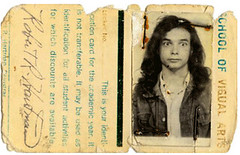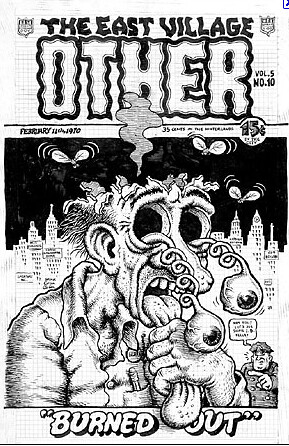Robert Hughes once described the weekly paste-up night at The East Village Other as “a Dada experience.” The year was 1970 and while none of us who were toiling into the wee hours of the morning at one of America’s oldest underground papers (founded in 1965) knew what he was talking about, we nevertheless assumed that to get Time’s then newly appointed art critic to spend some of his first weeknights in America with us, we were doing something weird and perhaps even important. “Dada was the German anti-art political-art movement of the 1920s,” he explained in his cool Australian accent. “And this is the closest thing I’ve come to seeing it recreated today. I’m really grateful for the chance to be here.”
Yet he needn’t have been so grateful. He was as welcome as any other artist, writer, musician, hanger-on and at that moment, detective Frank Serpico, the most famous whistle-blowing cop in America, was stationed at the local Ninth Precinct and would came around periodically in his various undercover costumes to schmooze with the EVO staffers. Paste-up night was open to anybody who drifted up to the dark loft above Bill Graham’s Fillmore East, a former Loews Theater turned rock palace on Second Avenue and Sixth Street, just next door to Ratner’s famous dairy restaurant, in a neighborhood that in the Thirties was the heart of New York’s Yiddish Theater. At that time it was the East Coast hippie capital.
Beginning at seven or eight o’clock at night and lasting until dawn, the regular and transient layout staff took the jumble of counterculture journalism and anti-establishment diatribe that was the paper’s editorial meat and threw it helter skelter onto layouts that were pretty anarchic. Anyone could join in whether they had graphic design experience or not, yet many of the gadfly layout artists were too stoned to complete their pages which were finished on the long subway ride to the printer deep inside Brooklyn. Read more…






